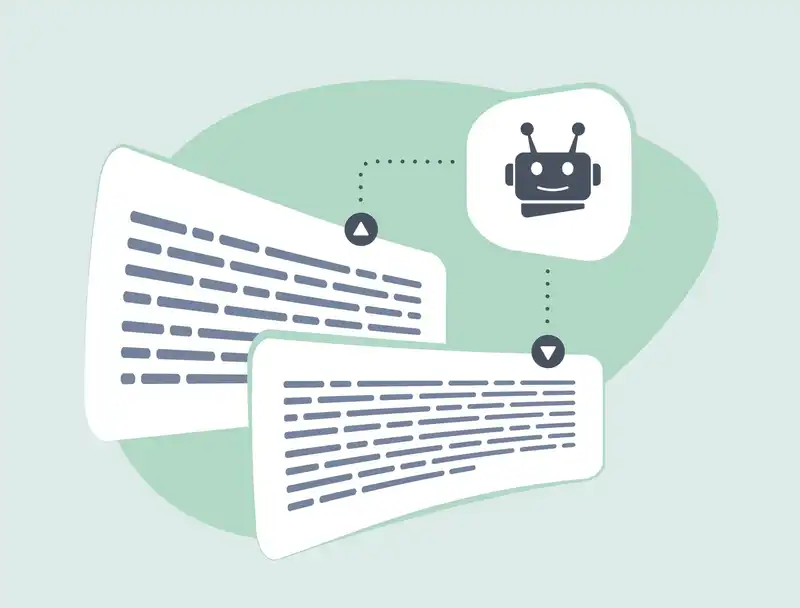Continuing with the book Managing and Using Information systems: a Strategic Approach by Keri E. Pearson and Carol S. Sounders, I would like to cover the case of the Boeing 787 Dreamliner.
The 787 Dreamliner is an aircraft developed by Boeing with 50% of composite materials (Boykoff, 2011). The advantage offered by this new aircraft is that it is more lightweight and fuel-efficient than previously developed airplanes by Boeing and its competitors. It also provides more space and better cabin pressure than other airplanes (Boykoff, 2011). However, shipping to airlines had several step-backs because of the approach used by Boeing to create a new complex supply chain and business process with several partners that were in charge of different parts of the aircraft.
The following sections provide more information on how Boeing used the radical approach of developing a new and complex supply chain for building the new 787 Dreamliner. In addition, we discuss the consequences of this approach, if it was the right choice, the risks involved, and possible alternatives that could have been used to reduce the delays and lower the costs.
Why did Boeing adopt the radical change approach for designing and developing the 787 Dreamliner?
Boeing adopted this radical approach to design and develop the 787 Dreamliner with the hopes of reducing costs and development time. There were risks of delays and potential loss of money by implementing the new design and the new production process for the 787 Dreamliner production.
This new design promised a reduction in fuel consumption to 20% and a more lightweight airplane. Unfortunately, they did not anticipate the risks of implementing a new design. For example, the battery had issues with overheating and burning. There were also structural flaws that were found in the design and needed reinforcement with titanium fittings (Gates, 2009).
The structural changes increased the weight of the plane, which results in burning more fuel per trip (Gates, 2009). Also, by trying to fix the issues with titanium, the company ended up paying around $17 million for titanium of the $260 million costs of each airplane (Scott, 2015).
The new production process increased the dependency on outsourcing from 50% in the previous models to 70% for the 787 Dreamliner (Teresko, 2007). Boeing decided to with another approach for the Dreamliner by implementing a new product development cycle time using several companies with their expertise. But problems with the skin of the fuselage, batteries, and nose section proved that it was not the right approach.
In my opinion, it was not a good move because they were developing the design and the processes from scratch at the same time. They needed to start by testing and perfecting the processes of developing the airplane based on previous models. This will prove the feasibility of the project, give them a better idea of the time frame necessary, and the processes that needed to be optimized for the production of the 787 Dreamliner.
Analyzing the Dreamliner program using the silo perspective vs a business process perspective.
Silo Perspective
From a functional or silo perspective, the organization is structured in functional units that contain people with similar goals that work together on a part of the production process (Dumas, Rosa, Mendling, & Reijers, 2019). Thus, the organization is structured in a way that ensures the work is done by allowing a group of experts to perform the required job.
Boeing implemented the silos approach by hiring multiple organizations and creating a network of partners with the belief of reducing costs and reducing financial risks. This network of partners consisted of more than 50 organizations and more than 100 locations. They all work as individual units as described by silos perspective in order to create the airplane. However, it did not go as planned because the first Boeing 787 Dreamliner was delivered three years after the scheduled date. Some estimate that the total investment in the 787 Dreamliner program was more than $32 billion while the projected cost was $5.8 billion (Gates, 2011).
Business Process Perspective
From a process perspective, the managers concentrate more on the “big picture” and understand that the optimal creation of value comes from processes across functional departments.
As the supply chain involved over 50 partners and more than 100 locations, it is nearly impossible for them to communicate effectively and share the same vision of the “big picture” when they are independent contractors working as independent silos. Boeing decided to go by area of expertise and outsourced the production of the main components of the plane. This is evident when the software that was developed by various companies has issues because they failed to communicate with each other which resulted in delays and the supply chain.
Conclusions about the design of the integrated supply chain
I believe that there should have been more integration in the supply chain. Having that many suppliers all around the world could have been better managed in order to reduce costs. For example, the center fuselage was created in Italy, the forward fuselage in Kansas, the edges fuselage in South Carolina, and so on (Teresko, 2007). All those locations (over 100) are then shipped to one location for the final assembly.
Globalization of business and communication networks allows companies to outsource parts from all over the world. However, it looks like Boeing did not plan or anticipate the level of complexity required for them to develop and deliver the 787 Dreamliner on time. In 2008, they decided to invest more in order to manage the global supply chain of the 787 (Boeing, 2008). However, investing more resources is only one part of the solution. For example, Boeing’s engineers blamed outsourced products and subcontractors for the lack of quality of the power panels used in the electrical system (Gates, 2015).
In my opinion, a way to communicate between suppliers and suppliers with Boeing should have been established before starting developing any 787 Dreamliner. Nevertheless, the state of the Web and web applications that supported this communication might not have been available almost 15 years ago when 7E7 was renamed to 787 in January 2005. So, as a way to create an integrated supply chain, they could have reduced the number of partners and locations so they have fewer breaking points and more communication in the supply chain. The fewer partners involved, the fewer the communication needs to travel across partners in order to understand the “big picture”. Also, Boeing should have enforced better quality controls within the processes to ensure that issues are found before the parts are assembled to avoid problems like the electrical ones stated previously.
If you were the program manager, what would you have done differently to avoid the problems faced by the Dreamliner program?
As I mentioned in the previous answer, reducing the number of partners and locations should have been a priority considering that the technology for communication remotely was not as developed as we have today. Also, Boeing should not treat partners as business silos, but as partners sharing the “big picture” of delivering the Dreamliner planes on time. Thus, communication is essential for them to know the status of the project in the different phases of design and development.
In addition, Boeing should have tested the parts and features of the plane before promising the public as integral features to expect in the 787 Dreamliner line. For example, if they have tested the lithium-ion batteries with parameters similar to the ones facing airplanes during a fly before delivering the planes, they could have found most of the issues and avoided bad publicity in 2013 (Scott & Saito, 2013). As mentioned in the book, it “underscores the hazards in relying on an extensive supply chain.”
Another example was that they did not anticipate the final weight of the airplane and offered this new airplane for how light it was compared to its predecessor could save 20% in fuel. This caused delays because Boeing had to go back to the design board in order to reduce the weight of the airplane that in 2009 it was 9.2 tons heavier than the version published in 2007 (Gates, 2009). They ended up replacing parts of the airplane with titanium with an increased cost of $17million per airplane (Scott, 2015).
Finally, I would have tested the new process with the previous generation of airplanes where there is already data on all of the parts of the plane, and the planes themselves were already tested in real-world conditions. After implementing the new process with gradual changes to the old one, I could decide if this new process could have worked on the brand new airplane 787 Dreamliner.
References
- Boykoff, P. (2011, November 18). 7 reasons the 787 Dreamliner is special. Retrieved
January 22, 2020, from https://www.cnn.com/travel/article/dreamliner-features/index.html. - Dumas, M., Rosa, M. L., Mendling, J., & Reijers, H. A. (2019). Fundamentals of
Business Process Management. Berlin: Springer Berlin. - Gates, D. (2011, September 24). Boeing celebrates 787 delivery as program’s costs top
$32 billion. Retrieved October 31, 2019, from
http://old.seattletimes.com/html/businesstechnology/2016310102_boeing25.html. - Gates, D. (2009, December 23). Boeing’s 787 Dreamliner is no lightweight. Retrieved
January 22, 2020, from https://www.latimes.com/archives/la-xpm-2009-dec-23-la-fi-dreamliner23-2009dec23-story.html. - Scott, A. (2015, July 24). Boeing looks at pricey titanium in bid to stem 787 losses.
Retrieved January 22, 2020, from https://www.reuters.com/article/us-boeing-787-titanium-insight/boeing-looks-at-pricey-titanium-in-bid-to-stem-787-losses-idUSKCN0PY1PL20150724. - Teresko, J. (2007, November 15). Boeing 787: A Matter of Materials — Special Report:
Anatomy of a Supply Chain. Retrieved January 22, 2020, from https://www.industryweek.com/companies-amp-executives/boeing-787-matter-materials-special-report-anatomy-supply-chain. - Boeing Shifts Schedule for 787 First Flight. (2008, January 16). Retrieved January 22,
2022, from https://web.archive.org/web/20080119140122/
http://www.boeing.com/news/releases/2008/q1/080116a_nr.html. - Scott, A., & Saito, M. (2013, January 23). FAA approval of Boeing 787 battery under
scrutiny. Retrieved January 22, 2020, from https://www.nbcnews.com/business/faa-approval-boeing-787-battery-under-scrutiny-1C8087461. - Gates, D. (2015, May 1). Boeing 787’s problems blamed on outsourcing, lack of
oversight. Retrieved January 22, 2020, from https://www.seattletimes.com/business/boeing-787rsquos-problems-blamed-on-outsourcing-lack-of-oversight/.




